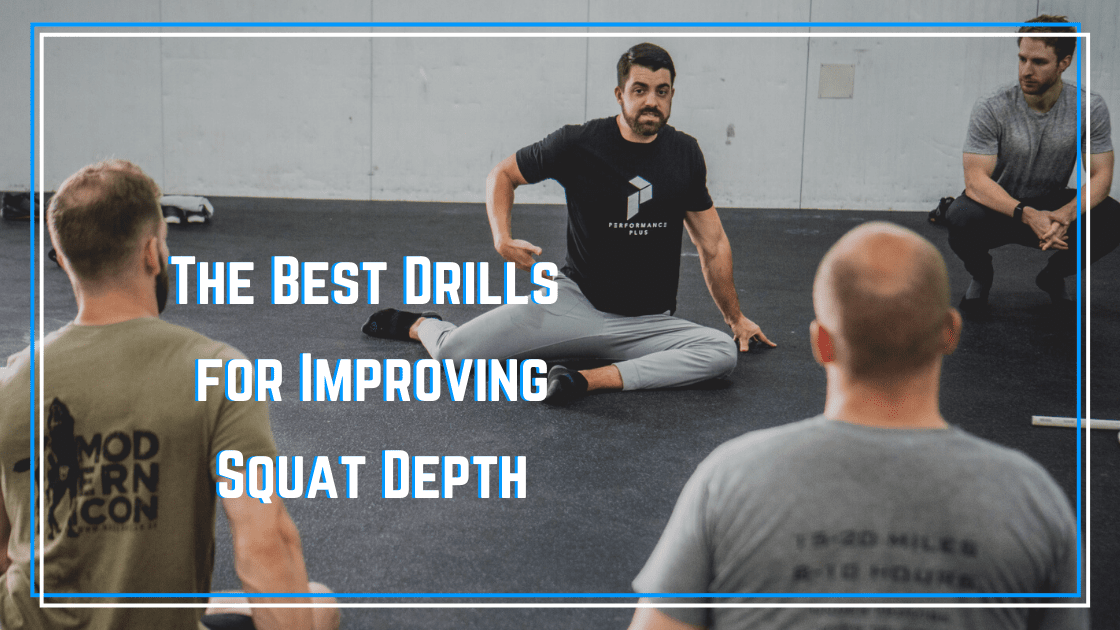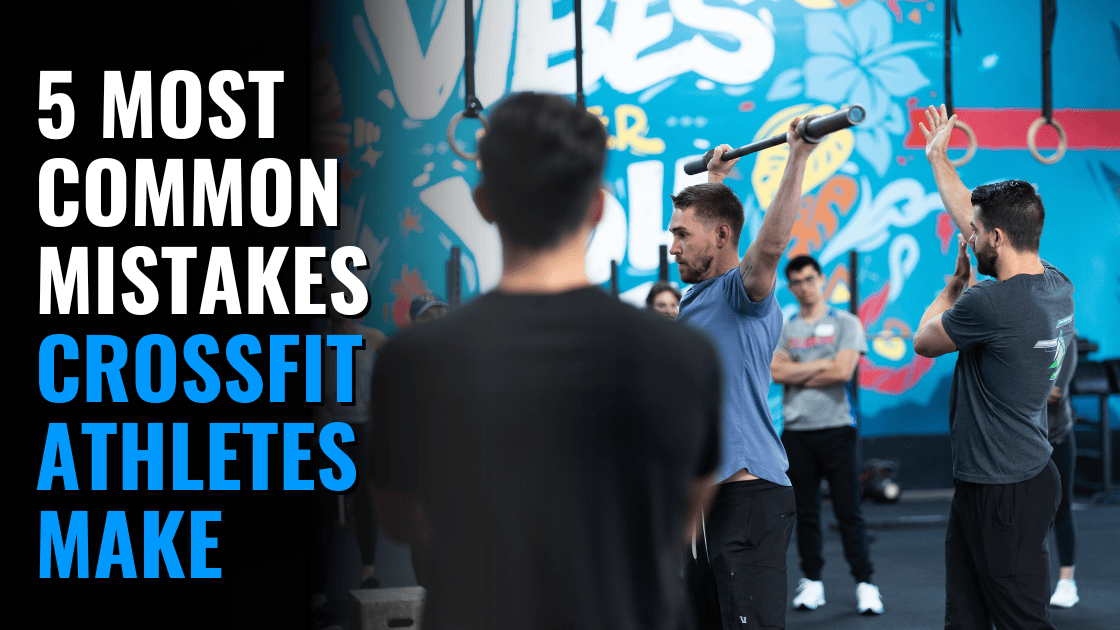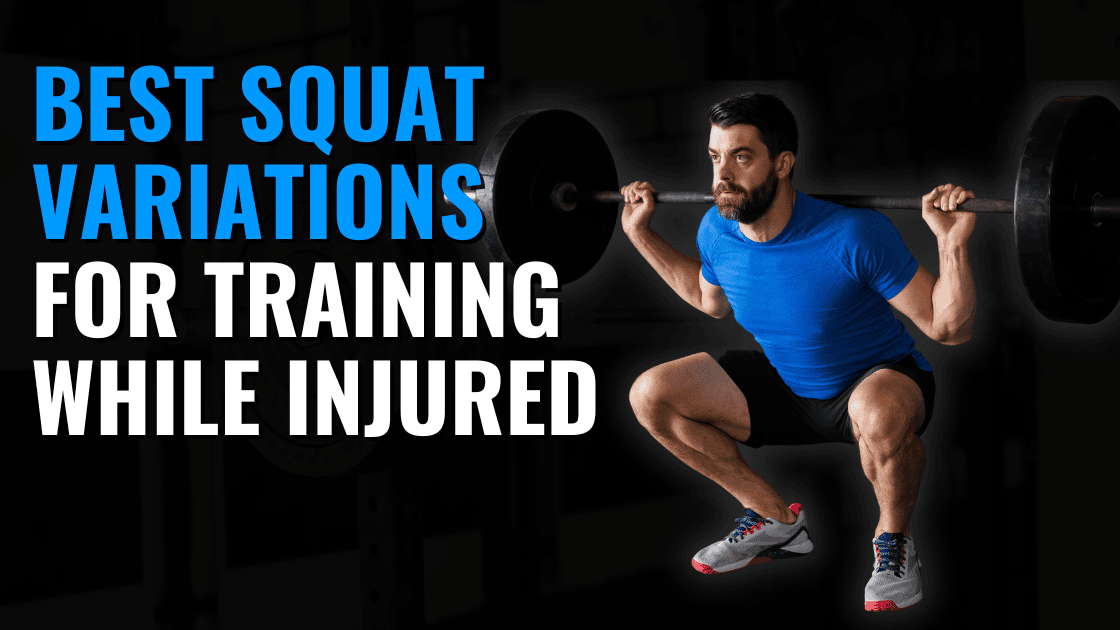Working on improving squat depth can be a long and frustrating journey. And while there are lots of available information on different mobility drills, it can be difficult to determine where to start.
Often, I see athletes working a variety of random movements with no laid out plan for improving squat depth. For example, they are stretching their hips because they feel hip “tightness” as they deep squat but the problem is really their ankle mobility. This video is a great example of this.
View this post on Instagram
So how do you improve your squat depth mobility plan? Or address a hip shift during squats if it is from poor mobility? I’ll outline three steps for you to do that!
Improving Squat Depth
Step One: Adjust Your Squat Positioning
Frequently, athletes are taught to barbell squat with specific set-up points such as keeping their toes pointed forward or always having a shoulder-width stance. But, every individual has different amounts of available mobility and different hip joint structures. This will significantly alter the squat position that each athlete should set up in.
So my first step in improving squat depth is always to spend a few minutes playing with different set-up positions. We can alter the angle of toe-out, stance width, or knee position as the athlete squats to depth.
Step Two: Assess Your Mobility
As mentioned earlier, many athletes are trying to improve their mobility when working on improving squat depth, but they aren’t hitting the specific areas where they should be focusing. If you want a deeper squat, you need to assess ankle dorsiflexion, knee flexion, hip flexion, and hip rotation. By identifying the areas you need to work on you will eliminate wasted time and speed up your squat depth improvement.
To learn where you need to spend your time, check out my FREE Ultimate Mobility Checklist for a step-by-step guide to mobility testing.
Step Three: Use Better Squat Depth Mobility Drills
I have been fortunate to work with hundreds of athletes with the goal of improving squat depth. The following are my favorite drills to prescribe based on my evaluation of that athlete’s needs.
Ankle Mobility Drills
Calf Eccentrics
For those needing a little more ankle mobility, calf eccentrics are a great starting point. Eccentric muscle contractions have been shown in multiple research studies to produce large mobility gains. The technique shown in this video does an excellent job of hitting both of the calf muscles at the same time.
Dorsiflexion PAILs/RAILs
I really like PAILs & RAILs (progression & regressive angular isometric loading) to open up a range of motion and build strength in those new ranges. The dorsiflexion version of this mobility technique is excellent.
Goblet Dorsiflexion
The goblet dorsiflexion stretch works not only stretching the ankle joint but doing so in a way that translates into better squat pattern mechanics.
Check out our Ankle Mobility Overhaul for a one-month mobility program! Hundreds of athletes have used this program to unlock their ankles and improve their squat performance!
Hip Mobility Drills
Hip External Rotation PAILs/RAILs
This version of PAILs and RAILs for the hip is excellent for those needing more hip external rotation. This should feel similar too, but deeper and stronger than, the pigeon stretch.
Hip Internal Rotations PAILs/RAILs
Hip internal rotation is often neglected in hip mobility work but quite frequently when addressed, hip internal rotation will open up squat depth. Don’t overlook stretches for hip internal rotation.
Hip Posterior Capsule Mobilization
This looks like the pigeon stretch but the subtle differences in technique should produce a greater stretch in the hip that more rapidly opens up your squat depth.
Our Hip Mobility Overhaul program is a four-week plan designed to unlock stiff hips for improved athletic performance.
General Squat Mobility Drills
Taking movements beyond stretching the isolated joints involved is important to improving your squat mechanics. These two movements are my favorite to work a bit of everything as well as general squat form.
Goblet Squat Eccentric Isometrics
By slowing our tempo down, we have more time to “feel” our optimal positioning and improve squat technique. The goblet hold also offsets our bodyweight making finding your balance easier.
Sit Squats
Sit squats look easy but are far from it. This exercise builds strength, control, and dials in the squat technique. Try 5×5 with 15 seconds rest and you’ll see what I mean!
Finally, if you’re in need of a done-for-you plan to rapidly improving squat depth check out our proven mobility plans as well as the 40+ other programs available in Performance Plus Programming.






